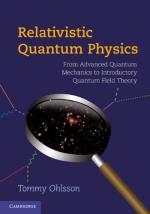|
This section contains 865 words (approx. 3 pages at 300 words per page) |

|
Quantum mechanics was born at the turn of the twentieth century when physicists realized that the behavior of the particles of matter--the atoms composing Max Planck's classic black body, for example--did not obey Isaac Newton's classical laws. Field theory is more than half a century older. Michael Faraday introduced the field concept in 1831.
Unwilling to accept the notion of "action-at-a-distance" to describe the electrostatic interaction between two charges, Faraday postulated the existence of the "electric field" filling all space around the particles. Electric charge both creates the field--it is the field's "source"--and reacts to the presence of a field. The electric force felt by a charge is a measure of the field's strength at that point in space.
By 1926 Paul Dirac, Werner Heisenberg, Erwin Schrödinger, and others had formulated non-relativistic quantum mechanics, the quantum analog of classical mechanics. Describing the low-energy...
|
This section contains 865 words (approx. 3 pages at 300 words per page) |

|


